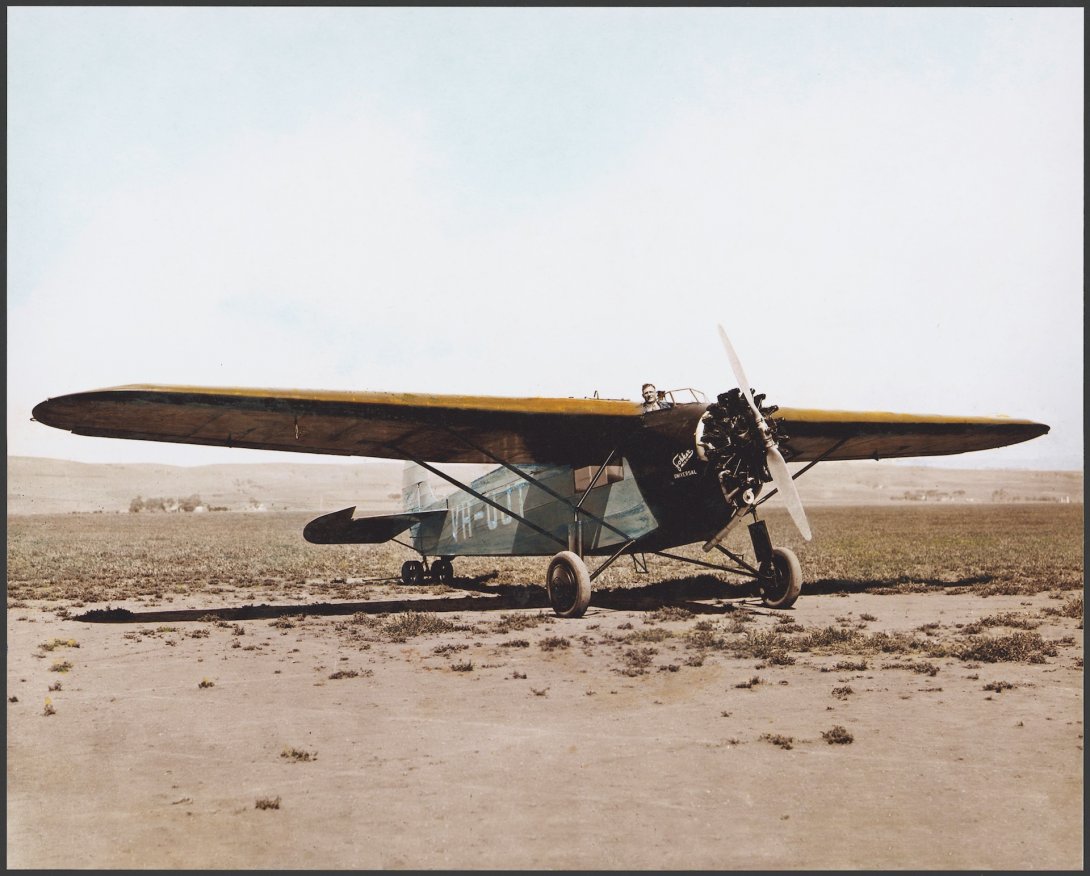Due to scheduled maintenance, the National Library’s online services will be unavailable between 8pm on Saturday 7 December and 11am on Sunday 8 December (AEDT). Find out more.

The early 1900’s gave flight to a new breed of daredevils: aviators. People had a desire to take to the skies and experience an equally thrilling and terrifying form of transportation.
Why is it that some people have the desire to take on these terrifying feats? Looking back through aviation history the argument could be made that a propensity for flying is passed through generations. Join us as we explore the prominent aviation families in our collection.
A Sister Act

Aviator sisters Freda Thompson OBE and Claire Embling (née Thompson) were pioneers in their time. They dared to attempt feats in aviation that were once reserved for men. This tenacity led Freda to become the first female President of the Royal Victorian Aero Club Committee.

Freda travelled the globe and held pilot’s licenses in other countries, we hold six of these licenses in our collection.

The sisters’ contribution to aviation has also been honoured with the Freda Thompson and Claire Embling Aviation Award given annually by the Australian Women Pilots’ Association (AWPA).

The Natural Air to the Thorne

Aviator Horace (Horrie) Miller was another pioneering figure in Australian aviation. He built a successful career as a pilot before eventually cofounding his own airline called MacRobertson-Miller Aviation Company.
Amongst his many impressive achievements, he was an Oswald Watt Medal recipient, an Officer of the Most Excellent Order of the British Empire (OBE) and winner of the Sydney to Perth Centenary Air Race.
He also piloted many emergency air ambulance flights including one occasion when a 14-year old boy and his father were flown from Broken Hill to Ru Rua hospital.
Horrie’s work in combining aviation with medical transport inspired his daughter Robin to take it a step further. She went on to become a qualified nurse while also earning her private pilot’s license.

Once Robin successfully upgraded to her commercial pilot’s license, she borrowed money to buy her own aircraft and worked out an arrangement with the Western Australian Department of Health to administer polio vaccines to remote communities. The vaccines were administered orally and to combat the bitter taste Robin would add it to sugar cubes, in the process earning herself the nickname ‘Sugar Bird Lady.’
Robin administered 37,000 doses of the polio vaccine and, in case that wasn’t impressive enough, on one occasion she delivered a baby mid-flight.

She went on to marry Dr Harold Dicks and together they co-piloted a number of flights for the Royal Flying Doctor Service of Australia. In this role, she also used her nursing training.
Robin died in 1975 at aged 35, but in her short life she had a profound impact on remote Western Australian communities, which led to a monument being erected in her honour at Jandakot Airport. She also received the Nancy Bird Walton Award in 1970 and was posthumously awarded the Paul Tissandier diploma.
U-Knighted Brothers

Sir Keith Macpherson Smith and Captain Sir Ross Macpherson Smith were aviator brothers who rose to fame in the early 1900’s. In 1919 the brothers, accompanied by two mechanics, became the first aviators to fly from England to Australia within thirty days. Captain Ross piloted the plane while his brother Keith served as co-pilot and navigator. Less than two weeks later the brothers were knighted for their remarkable feat in aviation.
A board game was also created shortly after the brothers’ winning the 1919 air race to commemorate the achievement. In the game players move around the board and visit the various countries on the brothers’ flight path from England to Australia. The board game varies slightly from the original route by including a few diversions.

The cherry on top was Captain Ross won 800 pounds for coming first place in a Kodak Competition for Photographs for the negatives taken by the four-man crew during the pioneering flight.

In 2012 the brothers’ contribution to aviation was acknowledged with both brothers being jointly inducted into the Australian Aviation Hall of Fame.
The Library’s collection is rich in aviation ephemera, see what you can discover!